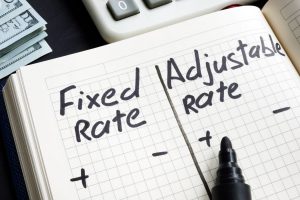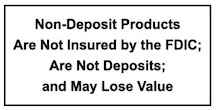Fixed vs Adjustable
Fixed-Rate vs. Adjustable-Rate Mortgages: An Overview
Fixed-rate mortgages and adjustable-rate mortgages (ARMs) are the two primary mortgage types. While the marketplace offers numerous varieties within these two categories, the first step when shopping for a mortgage is determining which of the two main loan types best suits your needs.1
- A fixed-rate mortgage charges a set rate of interest that does not change throughout the life of the loan.
- The initial interest rate on an adjustable-rate mortgage (ARM) is set below the market rate on a comparable fixed-rate loan, and then the rate rises (or possibly lowers) as time goes on.
- ARMs are typically more complicated than fixed-rate mortgages.
ARM Terminology
ARMs are significantly more complicated than fixed-rate loans, so exploring the pros and cons requires an understanding of some basic terminology. Here are some concepts borrowers need to know before selecting an ARM:
- Adjustment Frequency: This refers to the amount of time between interest-rate adjustments (e.g. monthly, yearly, etc.).
- Adjustment Indexes: Interest-rate adjustments are tied to a benchmark. Sometimes this is the interest rate on a type of asset, such as certificates of deposit or Treasury bills. It could also be a specific index, such as the Prime.
- Margin: When you sign your loan, you agree to pay a rate that is a certain percentage higher than the adjustment index. For example, your adjustable rate may be the rate of Prime plus 2%. That extra 2% is called the margin.
- Caps: This refers to the limit on the amount the interest rate can increase each adjustment period. Some ARMs also offer caps on the total monthly payment.7 These loans, also known as negative amortization loans, keep payments low; however, these payments may cover only a portion of the interest due. Unpaid interest becomes part of the principal. After years of paying the mortgage, your principal owed may be greater than the amount you initially borrowed.
- Ceiling: This is the highest that the adjustable interest rate is permitted to reach during the life of the loan.
The biggest advantage of an ARM is that it is considerably cheaper than a fixed-rate mortgage, at least for the first three, five, or seven years. ARMs are also attractive because their low initial payments often enable the borrower to qualify for a larger loan and, in a falling-interest-rate environment, allow the borrower to enjoy lower interest rates (and lower payments) without the need to refinance the mortgage.






